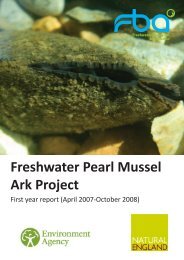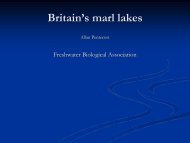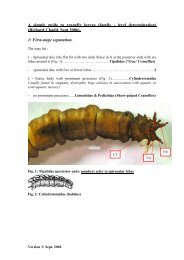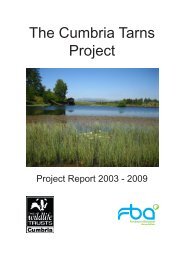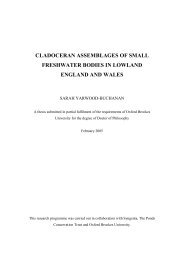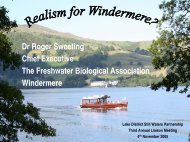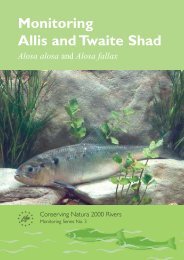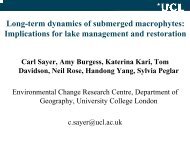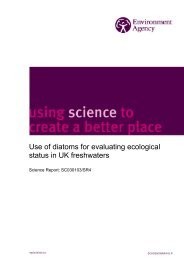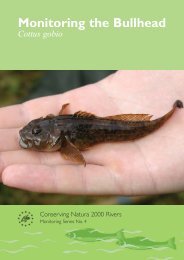Groundwater HIA post edit - FreshwaterLife
Groundwater HIA post edit - FreshwaterLife
Groundwater HIA post edit - FreshwaterLife
You also want an ePaper? Increase the reach of your titles
YUMPU automatically turns print PDFs into web optimized ePapers that Google loves.
Finally, the reversibility (or otherwise) of the potential drawdown impact should be<br />
taken into account. Whereas it may be relatively easy to reverse the effects of<br />
derogation, the damage caused to a wetland or an archaeological site by a significant<br />
or prolonged drop in water level may be irreversible. This will affect the degree of<br />
confidence that it is necessary to achieve.<br />
4.2.12 Step 12: Assess the water quality impacts<br />
<strong>Groundwater</strong> quality is given great prominence in the WFD, with the achievement of<br />
‘good’ status being just as dependent on quality as on quantity, and it is therefore<br />
treated separately here. However, methods for determining water quality impacts are<br />
not nearly as well-developed as for quantitative impacts. For example, in the RAM<br />
Framework, the approach is just to capture and record comments on existing water<br />
quality problems where they affect the ecology, so that they can inform the next step in<br />
the overall CAMS process, which is the sustainability appraisal. In addition, the<br />
uncertainty associated with impacts on water quality is inherently greater than with<br />
quantity, as the impacts are much harder to identify, measure, and prove. The<br />
Environment Agency is developing regional groundwater quality monitoring strategies,<br />
and will soon be in a position to define the background groundwater quality of all the<br />
principal aquifers at least, if not for all secondary aquifers. This is a requirement of the<br />
WFD, and data on all groundwater bodies are being collected so that the water quality<br />
status of each body can be defined. In fact, part of the WFD procedure includes<br />
identifying specific water quality pressures on the aquifer.<br />
Potential water quality impacts of groundwater abstraction are largely related to<br />
changes in the groundwater flow pattern in the aquifer. In some cases a numerical<br />
groundwater model will be available that is also suitable for modelling contaminant<br />
transport. This should be used to examine the impact of the proposed abstraction on<br />
the water quality. However, in the vast majority of cases there will not be this luxury.<br />
For these cases, the approach should be to ask the question: How is the flow pattern in<br />
the aquifer likely to be altered by the proposed abstraction? A basic picture of the flow<br />
patterns in the aquifer should be available from the conceptual model, and the usual<br />
combination of tools, professional judgement and expert opinion from technical<br />
specialists should be used to assess how these flow patterns will be altered. A<br />
judgement can then be made on whether or not the water quality impacts are likely to<br />
be significant. Issues to watch out for include the following:<br />
• Pollutant plumes from point sources (such as old landfills or industrial sites)<br />
accelerating or changing direction. Briefly, plumes in groundwater move by<br />
advection, that is with the water flow, and by dispersion. Dispersion is<br />
largely independent of the flow velocity so that a new abstraction, unless<br />
very large, is unlikely to<br />
change the rate of<br />
dispersion significantly.<br />
Advection takes place with<br />
the flow of water, so that<br />
increased rates of flow will<br />
increase the plume<br />
movement in a similar<br />
way. <strong>Groundwater</strong><br />
abstraction can therefore<br />
draw pollution into<br />
previously unpolluted parts<br />
of the aquifer, as reported<br />
by Morgan-Jones et al Potential point source of pollution<br />
40 Science Report – Hydrogeological impact appraisal for groundwater abstractions




